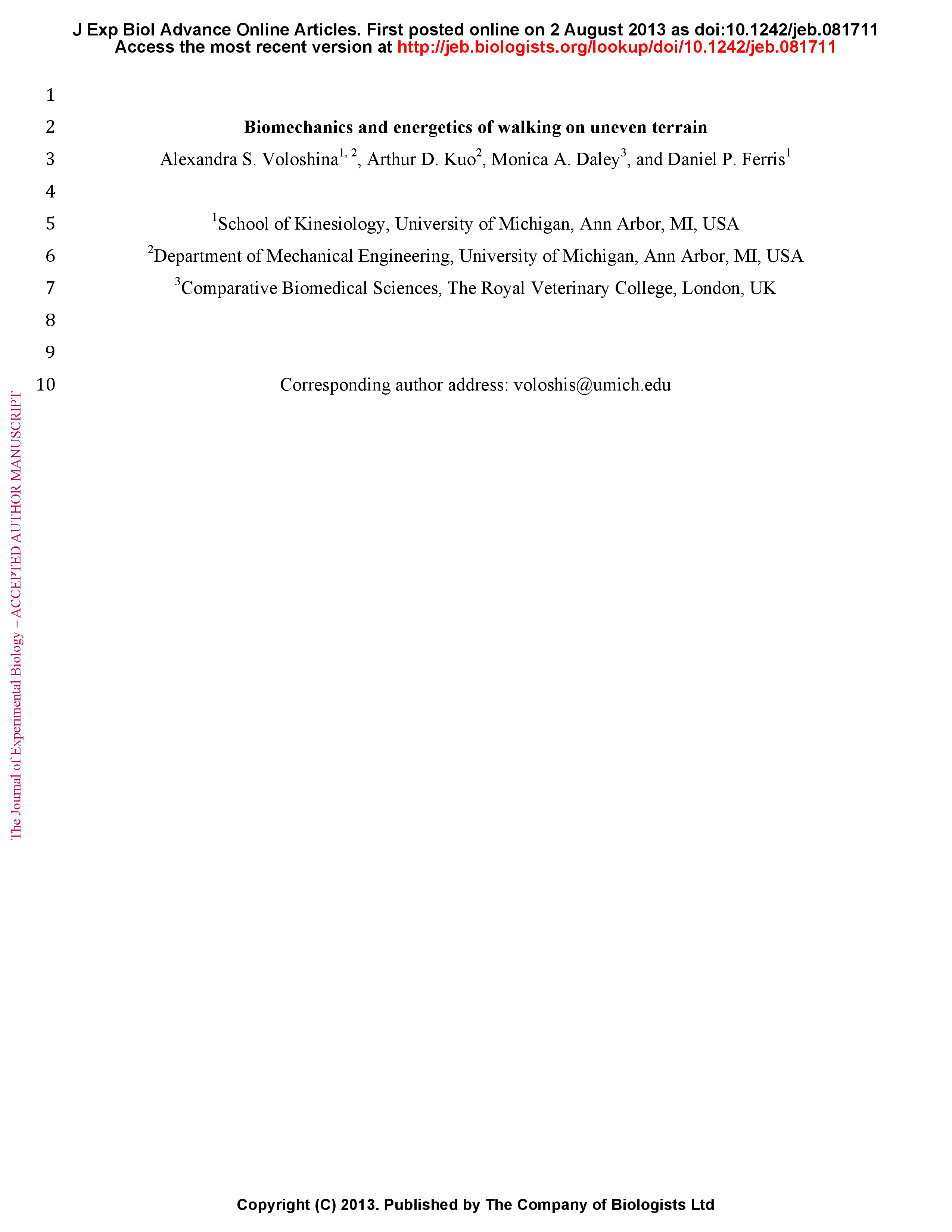Summary
Walking on uneven terrain is more energetically costly than walking on smooth ground, but the biomechanical factors that contribute to this increase are unknown. To identify possible factors, we constructed an uneven terrain treadmill that allowed us to record biomechanical, electromyographic, and metabolic energetics data from human subjects. We hypothesized that walking on uneven terrain would increase step width and length variability, joint mechanical work, and muscle co-activation compared to walking on smooth terrain. We tested healthy subjects (N=11) walking at 1.0 m/s, and found that, when walking on uneven terrain with up to 2.5 cm variation, subjects decreased their step length by 4% and did not significantly change their step width, while both step length and width variability increased significantly (22% and 36%, respectively; p<0.05). Uneven terrain walking caused a 28% and 62% increase in positive knee and hip work, and a 26% greater magnitude of negative knee work (0.0106, 0.1078, and 0.0425 J/kg, respectively; p<0.05). Mean muscle activity increased in seven muscles in the lower leg and thigh (p<0.05). These changes caused overall net metabolic energy expenditure to increase by 0.73 W/kg (28%; p<0.0001). Much of that increase could be explained by the increased mechanical work observed at the knee and hip. Greater muscle co-activation could also contribute to increased energetic cost but to unknown degree. The findings provide insight into how lower limb muscles are used differently for natural terrain compared to laboratory conditions.








